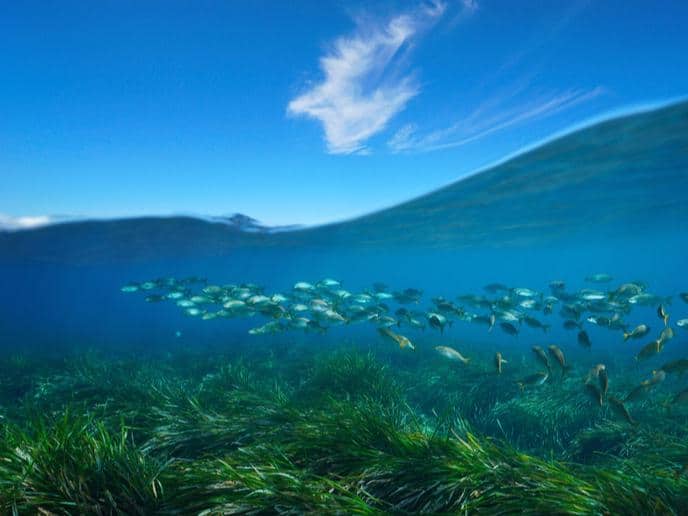Experts at the forefront of efforts to restore the UK’s coastal seagrass meadows say the remarkable plant’s contribution to the most important to-do list in the history of humankind should be reassessed.
Seagrass – the world’s only underwater flowering plant – is not only vital for biodiversity, but also absorbs carbon dioxide, which helps to tackle climate change.
In a new paper, just published in the journal Science, Swansea University researchers argue for considering the value of seagrasses beyond carbon in the context of the UN Sustainable Development goals – the shared blueprint for achieving a better and more sustainable future. Conserving and restoring seagrass meadows actually contributes to achieving 16 out of the 17 goals.
The authors, including Dr Richard Unsworth and Dr Leanne Cullen-Unsworth, explain that the planetary emergency is driving interest in using seagrasses as a nature-based solution for climate change and biodiversity recovery.
However, seagrass sensitivity to stressors is acute, and in many places, the risk of loss and degradation persists.
Dr Unsworth, who leads the University’s team and is a founding director of marine conservation charity Project Seagrass, said: “With the increasing realisation of the planetary emergency that we face, there is growing interest in using seagrasses as a nature-based solution for greenhouse gas mitigation.
“But if the ecological state of seagrasses remains compromised, then their ability to contribute to nature-based solutions for the climate emergency and biodiversity crisis remains in doubt.”
The team’s latest research has examined the major ecological role that seagrasses play and how rethinking their conservation is critical to understanding their part in fighting our planetary emergency.
Dr Unsworth said: “Seagrasses are of fundamental importance to the planet but compared with terrestrial grasses, and even seaweeds, the body of research within seagrass is magnitudes smaller.
“However, there are substantial ecological, social, and regulatory barriers and bottlenecks to seagrass restoration and conservation because of the scale of the interventions required.
“Now advances in marine robotics, molecular ecology, remote sensing, and artificial intelligence all offer new opportunities to solve conservation problems in difficult environments at unprecedented global scales.
“It is only by looking beyond carbon and recognising the true value of seagrass meadows can we place it on a pathway to net zero loss and ultimately net gain.”


